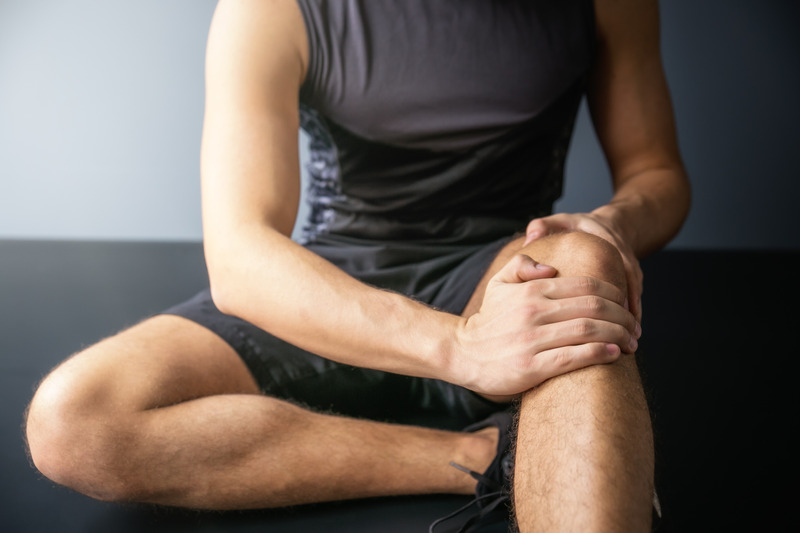Phototherapy
Phototherapy, also known as light therapy, is an innovative treatment method that uses specific wavelengths of light to accelerate tissue healing, reduce pain and inflammation, and enhance overall rehabilitation outcomes.
It is particularly effective in relieving pain caused by conditions such as osteoarthritis, tendinitis, and neuropathic pain. It reduces inflammation by inhibiting inflammatory mediators, promotes tissue healing by stimulating ATP production and collagen synthesis, and enhances circulation to deliver more oxygen and nutrients to the affected area.
Phototherapy is categorized into infrared therapy, ultraviolet therapy, and low-level laser therapy. It also includes heliotherapy, polychromatic light therapy, chromotherapy, visible light therapy, and low-level polychromatic light-emitting diode (LED) therapy.
Phototherapy is a completely non-invasive and safe alternative to invasive procedures and pain medications. It is used in the treatment of musculoskeletal injuries, osteoarthritis, neuropathic pain, wound healing, and various skin conditions. A consultation with a physiatrist is necessary to determine whether phototherapy is suitable for your specific condition. It is most often combined with other therapies to optimize treatment results and accelerate the rehabilitation process.
When Is Phototherapy Recommended

How Can Phototherapy Help You?
Physiological effects include accelerated metabolic activity, vasodilation, and enhanced vascularization. These effects contribute to the recovery of chronic inflammatory conditions.
The thermal effect increases collagen elasticity, reduces joint stiffness, provides pain relief, and alleviates muscle spasms.
Together, these benefits make phototherapy widely applicable in the rehabilitation of various conditions.
It is often used as a preparatory procedure before kinesitherapy—such as stretching and range-of-motion exercises—to maximize therapeutic effects. It is also applied prior to massage or electrophoresis to enhance drug absorption.
What Are the Contraindications?
Contraindications for phototherapy include malignancy, scar tissue, decompensated heart failure, acute injuries and inflammation, bleeding or coagulation disorders, circulatory impairment, poor thermoregulation, and photodermatosis.
Safety and Side Effects
Phototherapy is a completely safe and effective treatment method when applied correctly and under the supervision of qualified medical professionals. Treatments are conducted under controlled conditions, with careful regulation of dosage and exposure time to minimize the risk of overexposure.
In certain cases, protective eyewear is required to shield both patients and staff from direct light exposure. Light doses are tailored to each patient’s individual needs, and patients are closely monitored throughout therapy to promptly detect any potential side effects.
Side effects are generally mild and temporary. Patients may experience mild redness or irritation in the treated areas, which typically resolves shortly after the session.
Prolonged exposure to UV light may cause slight skin dryness, which can be managed with regular use of moisturizers.
Personalized Treatment Plans for Faster Recovery
Each patient receives a personalized treatment plan focused on restoring function and reducing pain. The approach targets the root cause of the problem—whether it’s an injury, a chronic condition, or post-surgical rehabilitation. Based on your diagnosis, condition, and goals, we create a tailored plan that may include manual therapy, therapeutic exercises, physical modalities, and specialized treatments.
Our goal is to help you reach maximum results in the shortest possible time, using the most effective and comfortable approach. We’re proud to say that, thanks to our extensive experience, full dedication, and state-of-the-art technology at Dr. Rodić’s clinic, we are able to avoid surgery in up to 80% of cases—while achieving the same or even better outcomes. At the same time, we reduce the need for medication and help you restore your quality of life quickly and without invasive procedures. In fact, our patients tend to recover up to 30% faster.
In therapy, we use a variety of treatments—therapeutic modalities that are an essential part of comprehensive physiatric care.
Our Patients’ Experiences Are Our Best Recommendation
Relief Begins With the Right Diagnosis
Early and accurate detection of the underlying cause is the first step toward effective treatment and a faster recovery.
